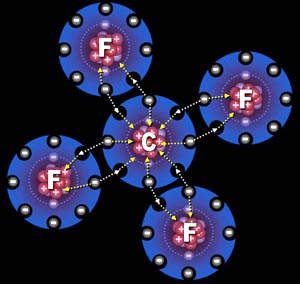

Proton-proton fusion: The dominant driver for stars like the sun with core temperatures under 27 million F (15 million C), proton-proton fusion begins with two protons and ultimately yields high energy particles such as positrons, neutrinos, and gamma rays. So far, the only facility capable of initiating the deuterium-deuterium reaction is the Joint European Torus (JET) facility, which has only achieved it fleetingly, according to EuroFusion. However, a solely deuterium-deuterium reaction would require temperatures of at least 720 million to 900 million F (400 million to 500 million C), according to EuroFusion (opens in new tab), a consortium of national fusion institutes located around Europe. Several test nuclear fusion reactors can reach temperatures around 270 million F (150 million C), according to ITER (opens in new tab). Scientists at ITER have proposed making tritium in large quantities by bombarding lithium, an element found in Earth's crust, with neutrons.ĭeuterium-deuterium fusion: Theoretically more promising than deuterium-tritium because of the ease of obtaining the two deuterium atoms and the higher energy yields it would produce, this method is also more challenging because it requires extremely high temperatures to work. It was produced in large quantities during nuclear missile testing in the 20th century, but its half-life is about 12 years, meaning half of the quantity decays in that time frame. Tritium contains one proton and two neutrons. A gallon of seawater (3.8 liters) could produce as much energy as 300 gallons (1,136 liters) of gasoline.

Unlike the NIF reactor, the ITER project uses strong magnets to steer the hydrogen plasma around a donut-shaped reactor, called a tokamak.ĭeuterium is a promising ingredient because it is an isotope of hydrogen, containing a single proton and neutron but no electron. The largest potential nuclear reactor, the ITER project (opens in new tab) in southern France, which is still years from completion, also uses these two isotopes to power its reaction. The process, which requires temperatures of approximately 72 million degrees F (39 million degrees Celsius), produces 17.6 million electron volts of energy.Ĭurrent experiments with deuterium-tritirum fusion are ongoing at the the DIII-D National Fusion Facility in San Diego, California. So to make the reaction viable, the energy produced by the reaction must also account for the sizable amount of energy lost as electricity is converted to the light that powers the lasers.ĭeuterium-Tritium fusion: The most promising combination for power on Earth today is the fusion of a deuterium atom with a tritium one to create a helium atom. That's because to heat the plasma, scientists must draw energy from the electrical grid. But experts say a viable commercial fusion reactor is likely decades away. The ignition facility uses laser beams to confine a plasma of deuterium and tritium, two isotopes, or versions, of hydrogen. In 2022, scientists with Lawrence Livermore National Laboratory's National Ignition Facility (NIF) announced that for the first time, a nuclear fusion core produced more energy than it consumed. Key to this dream of limitless clean power is producing more energy from the reaction than it takes to produce it. Fusion is such an attractive alternative to existing energy sources because it produces little-to-no radioactive waste or greenhouse gas and requires relatively simple ingredients. Scientists have pursued this goal for decades. The "Holy Grail" of clean power is to generate commercial energy from nuclear fusion reactions. Fusion is also being considered as a possibility to power crafts through space.

When set off in an intentionally uncontrolled chain reaction, nuclear fusion drives the hydrogen bomb.
SPACECHEM FUION BONDED ATOM HOW TO
It is also a potential energy source on Earth, if scientists can figure out how to get more energy out of the reaction than it requires to initiate it. Fusion is the dominant source of energy for stars in the universe.


 0 kommentar(er)
0 kommentar(er)
